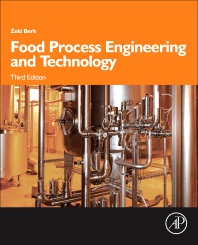Water usage and treatment
Take a load off
Food and beverage plants under pressure to reduce contaminants in their discharge water are finding a wider range of solutions.

Dr Pepper Snapple Group installed the Baswood BioViper wastewater system. It will treat up to 350,000 gal./day. Source: Baswood.

Microbes that eat BOD in the treatment water help the Cambrian EcoVolt system produce clean water and clean energy. Source: Cambrian.

GE Power & Water’s first installation of its LEAPmbr membrane technology in Spain was at a poultry processing facility. Source: GE Power & Water.

Cow water treated with Atlantium’s UV system (shown above)no longer needs antibiotics to neutralize contaminants. Source: Atlantium.




For more on water conservation, water reuse and wastewater pretreatment, click here.
Water treatment technologies designed for the conservation and reuse of process water are proliferating. This is helping processors improve their water-use ratio in manufacturing; minimize discharge of biochemical oxygen demand, chemical oxygen demand or total suspended solids; and cut fresh water consumption. These systems forward water recovery objectives, raise productivity goals and target concepts such as zero liquid discharge and near net zero operations that can help take a plant nearly “off the grid.”
Suppliers of water solution technologies have updated or advanced the body of aerobic, anaerobic, membrane and biological nutrient systems available to food and beverage companies. Some of these approaches rely on the novel use of microbes to reduce contaminants and nutrients while creating energy. Another technology shows the effectiveness of UV in disinfecting process water.
But no wastewater treatment solution is suitable for every application (see “Water usage: Waste not, want not,” FE, August 2013). And successful implementation of treatment strategies is taking recycled water into more than irrigation, cooling tower reuse, landscaping and composting operations for sustainability.
Edible energy
Recently discovered electricity-generating organisms are at the heart of a unique commercial system from Cambrian Innovation that not only treats wastewater containing widely varying BOD loads, but also generates electricity for energy savings at the plant.
EcoVolt is the first industrial-scale, bioelectrically enhanced wastewater treatment system that uses naturally occurring organisms with unique properties to extract the energy from the BODs and organics during the treatment process, which can offset overall operation costs, says Cambrian CEO and Founder Matthew Silver. “The microbes were discovered in 1999 and fall into a category of organisms with the ability for exo-cellular electron transfer, a step where microbes transfer their electrons out of their cell walls and onto metal in their environment, which they do when they are not able to ferment or respire aerobically,” explains Silver. The microbes use the metal as part of their respiratory pathway. Cambrian creates inoculants that are enriched in these microbes and builds them up in their reactor as part of the wastewater treatment process.
The microbes are suited for use with wastewater streams that are high in organic content, including dissolved carbon and solids, as well as other molecules. “Food and beverage companies use electricity to pretreat these fluids, yet ironically, the wastewater itself contains energy in the effluent,” says Silver.
The EcoVolt system is an enhanced anaerobic process that leverages electromethanogenesis, a method discovered in 2008 and commercialized by Cambrian, in which electrically active organisms convert carbon dioxide and electricity into methane fuel. Biologically coated electrodes in the reactor facilitate oxidation of the BODs and convert them into CO2, electricity and electrons which reduces the BOD levels, says Silver.
The electrons are put through another electrode within the reactor that consumes the electricity and the CO2, generating methane. The conversion occurs in a fixed film anaerobic setting that stabilizes the process regardless of the incoming BOD load. The end result is clean water, clean gas and up to 99 percent BOD reduction. Direct reactor control allows for seasonal flow adjustment.
Cambrian offers its EcoVolt bioelectric wastewater treatment as a self-contained, prefabricated turnkey system enclosed within a shipping container. The plug-in system is modular and easy to operate. An industrial-scale system has been operating for 15 months at the Clos du Bois winery in California, treating up to 10 percent of the winemaker’s total wastewater flow and up to 90 percent of the BOD contained in the wastewater, while simultaneously generating methane fuel.
The EcoVolt system is expected to save the winery up to $1 million annually by reducing aeration energy requirements, the associated sludge/biosolids hauling and disposal costs, and sewer fees. The treated water can be reused for irrigation, tank washing and production.
Gigantic greenfield
CDM Smith is leading the development of another massive US wastewater reuse project set to eclipse the PepsiCo Frito-Lay Casa Grande, AZ project it successfully designed, built and started up in 2012. The new plant will have no process water discharged to a publically owned treatment works or to a waterway. This is especially significant, since the plant, which is ramping up operations at present, is treating 1.8 million gal./day of process wastewater. When fully operational this summer, the facility will produce 3.2 million gallons of wastewater daily, roughly five times the volume of the Casa Grande plant, says Al Goodman, CDM Smith associate and client service manager.
The facility has the greater goal of reducing dissolved solids to land application and sustainably returning up to 1.8 million gallons per day to production, as technically and economically as possible. An anaerobic digester designed for biogas generation and recovery back into the production process is in place.
CDM Smith designed and installed a custom process wastewater treatment and return plant (PWTRP) featuring a novel anaerobic/aerobic MBR system designed to handle the high rates of discharge process water and its constituent load. The treatment system incorporates screening, sedimentation, a membrane bioreactor, reverse osmosis, water stabilization and chlorine disinfection to treat the effluent to be equivalent to U.S. Environmental Protection Agency water quality standards, states Goodman. That water will be redirected toward production process needs.
Total dissolved solids, such as the concentrated salts suspended in reverse osmosis reject wastewater, are removed onsite with an enhanced spray evaporation system designed and developed by CDM Smith.
Bottling productivity
Dr Pepper Snapple Group, a producer of flavored beverages, chose its Houston, TX bottling facility as the site to further the company’s environmental sustainability and operating efficiency goals for reducing water consumption and wastewater discharge. The Houston regional bottling facility, like other plants DPS operates throughout the US, generates effluent containing high organic content. Ensuring the water leaving the facility will put less strain on municipal resources while addressing the cost and environmental implications associated with its energy and water usage moved DPS to invest in its first wastewater pretreatment system.
DPS selected the BioViper biological pretreatment system designed by Baswood Corp., a two-year-old firm that has developed a unique modular, scalable and adaptable fixed-media technology that uses off-the-shelf components to achieve a high level of wastewater disinfection.
Construction on the system designed to treat up to 350,000 gal./day began in September 2012 and was completed in February 2013, according to Bill Faulds, executive vice president at Baswood. DPS’s Houston plant had no wastewater system in place previously and discharged its effluent to the city systems.
The BioViper system currently treats 165,000 gal./day, all of the wastewater generated at the plant; it is designed and ready to handle additional capacity as the DPS plant scales up production. Incoming biological oxygen demand load up to 5,000mg/L is being reduced to 300mg/L and lower strength. The system is capable of handling loads of more than 7,500mg/L of BOD, with an energy consumption of 2,400kWh/day, says Faulds.
“Data has shown the effluent discharged from the DPS facility to the city of Houston has seen contaminant—measured as chemical oxygen demand—down by 90 percent, far exceeding the design standard of 75 percent,” says Faulds. This equates to the removal of more than 7,000 lb. of BOD load to the city per day. Baswood says the system requires 40 percent less energy than traditional aerobic systems, reduces biosolids sludge by 70 percent or more and attains consistent digestion rates in excess of 80 percent.
Baswood’s BioViper technology consists of a silo-type three-stage reactor where each treatment zone is aligned vertically. The stacked configuration reduces real estate requirements (the DPS unit occupies 6,000 sq. ft.). Wastewater is fed sequentially through the series of biological treatment zones, encountering Baswood’s patented aerobic/anaerobic integrated media system and dry cycle aerobic/anaerobic digestion technology, says Faulds. The manipulation of the common membrane media is proprietary, and understanding its science allows Baswood to manipulate each of the three stages of treatment media (thicker, coarser) with minimal chemical needs and low energy consumption, so it can handle a range of soluble and inert solids and BODs.
The BioViper system is typically constructed in a three-reactor array, with material flowing by gravity through one reactor and being piped to the top of the next reactor where the sequence continues, says Faulds. The wastewater passes through three reactors or nine treatment zones before discharge. Faulds says DPS is evaluating the technology for additional bottling plants.
Bringing UV into dairy
The reuse of cow water for process line rinsing and flushing to achieve a significant reduction in potable water consumption was a primary goal for AgriMark-Cabot Dairy in Middlebury, VT. The Middlebury plant generates significant quantities of cow water as a byproduct of its whey production, which amounts to approximately 2,000 tons of whey protein concentrate and whey permeate daily.
Pasteurization of the cow water to the FDA Pasteurized Milk Ordinance requirements was necessary for water reuse and to further Cabot’s sustainability goals, according to Doug Yedwabnick, North American sales director for Atlantium, which provided a UV treatment solution to meet the dairy’s needs.
Cabot installed Atlantium’s Hydro-Optic low-energy water disinfection system, an alternative to more energy-intensive heat pasteurization approaches. The Atlantium RZ104 PMO inactivates spores and water-borne microorganisms with a medium pressure UV dose (120 mJ/cm2) that achieves high log reduction.
“Heat pasteurization consumes 150kW per hour while the Atlantium technology uses just 3kW per hour to achieve the same level of treatment,” says Yedwabnick. The Hydro-Optic models treat water continuously at flow rates ranging from 15 gpm to 4,000 gpm, so it can deliver low energy usage with high rates of treatment. The water can be used for processes such as final rinse, sanitation and saline solution dilution.
The unit can be installed downstream of a polishing RO device and is designed to kill biological contaminants, not remove them like other water treatment approaches, explains Yedwabnick. With the installation of the system, Cabot saw electricity consumption go down by 158,000kW, CIP for tanks and allergens reduced by $13,000 and downtime costs lowered to $19,200. Overall net savings of more than $71,000 have been realized since the unit was installed in 2010.
Miniaturizing membrane
Spanish poultry processing firm Procavi S.L. increased production at its facility in the province of Seville and needed its wastewater treatment rates to rise too, without expanding its existing facility. Space limitations narrowed the choice of treatment technologies. Plus, the approach would need to meet the region’s strict water discharge regulations cost-effectively.
GE Power & Water’s LEAPmbr membrane bioreactor technology installed at Procavi allows the poultry processor to upgrade from its more conventional wastewater solution to a high-capacity system that operates in the current plant footprint. Treated water is reused for washing applications within the production facility and for irrigation purposes.
The LEAPmbr technology, derived from GE’s Zeeweed 500 MBR line of reinforced, hollow-fiber ultra-filtration technologies, allowed Procavi to raise treatment process rates from 600 cubic meters/day to 1,200 cubic meters/day, while improving productivity by 15 percent and decreasing energy costs by 30 percent. In addition, Procavi reduced its membrane aeration equipment and controls by 50 percent.
GE Power and Water also recently introduced LEAPprimary, a complementary technology to its ZeeWeed MBR and LEAPmbr systems, to reduce overall energy usage, costs and physical space by combining multiple unit operations into one unit. LEAPprimary replaces conventional clarifier/fine screen technology and fits in a space one-tenth the size.
The energy usage for biological treatment is reduced because solids and organic materials are removed prior to secondary biological treatment. The GE system removes 50 to 70 percent of total suspended solids and 25 to 40 percent of biochemical oxygen demand. The removed solids can be dewatered to 20 to 30 percent dry matter with the new unit, minimizing handling costs. The dewatered residual product is rich in organics and can be used in anaerobic digestion or other processes that convert organics in wastewater into energy.
Advancing reverse osmosis
An ineffective water treatment system can become a financial burden, and problems can stem from the quality of the water coming into the system, according to U.S. Water Services Inc., which offers a total water management approach to food and beverage companies.
A Midwestern poultry processing plant asked U.S. Water to conduct a water treatment audit to highlight opportunities to improve overall efficiency while realizing cost savings, says Rich Cook, strategic business leader for food and beverage at the company. “Often, when customers look for savings in a water treatment program, they look for those savings in the form of reduced chemical spend, but that is only part of the bigger picture,” states Cook. In the case of this food plant, U.S. Water determined that the poultry plant’s boilers had been operating with low cycles of concentration and high system blowdown due to poor make water quality. This excessive blowdown was costing the processor tens of thousands of dollars annually in fuel, water and chemicals.
As water turns into steam in the boiler steam drum, solids disolved in the feed water are left behind and, if left unchecked, the solids can form scale, which adheres to heat transfer surfaces and can dramatically degrade boiler efficiency. Boiler water is periodically expelled or blown down to reduce the level of suspended solids to acceptable limits as part of any water treatment approach, but excessive blow down discharges water at high temperatures, wasting water, fuel and treatment chemicals. The key is to blowdown as little as necessary to conserve utilities, and what is necessary is dictated by the quality of the makeup.
The poultry plant installed the U.S. Water EnergyOUT, a small reverse osmosis unit as a water pretreatment step. The system is part of a customizable direct energy savings program that provides reduced boiler blowdown and savings on fuel, water and sewage costs as part of its solution. The energy reduction program combines the company’s chemical solutions with a complete reverse osmosis (RO) system of its own design to trim carbon emissions, chemical use and water discharge.
Installation of the EnergyOUT reverse osmosis allowed the poultry plant to realize annual savings of 2.59 million gallons of water, 3.95 MM in BTUs and 413,846 lb. less CO2 generation. Feed water alkalinity was trimmed up to 99 percent. “This is significant because alkalinity enters the boiler system in the form of carbonates and bicarbonates that break down the boiler system and release CO2 into the steam. It combines with water as the steam condenses, forming carbonic acid, an aggressive, corrosion causing-condensate that impacts the steam system and piping,” says Cook. The RO unit removes the carbonates that may form carbonic acid. In addition to the utility savings at the poultry plant, the EnergyOUT program also provided higher quality steam and prolonged system life.
Brew and bioreactors
Global Water & Energy offers 12 anaerobic technology systems for industrial wastewater treatment, along with several generic aerobic solutions including membrane bioreactors and biological nutrient systems, according to Brian Healy, manager of business development.
The combination of anaerobic and aerobic methods has the potential for use in the treatment of water coming into a plant as well as discharge flowing from processing operations. GW&E configured several of its technologies into a system for use by Pacific Beverages’ Bluetongue, a microbrewery looking to reuse process water generated from beer brewing and bottling at its Warnervale, Australia facility. The brewery sought a pretreatment system able to convert 680 cubic meters/day of wastewater containing 6,669kg/day of chemical oxygen demand into water for reuse in the CIP process.
The GW&E system includes a rotary drum screen, primary settler, equalization tank, in-line pH adjustment device and three types of treatment technology: its Anubix anaerobic active volume methane reactor, a biogas dryer and biogas safety flare. The aerobic elements include GW&E’s Membroz MBR system, mechanical sludge dewatering with a belt press, a reverse osmosis unit and a disinfection system that combined treat the effluent for reuse.
Anaerobic influent was reduced from 4,552mg/L COD to 350mg/L; a subsequent aerobic step trimmed the influent from 350mg/L COD to effluent of 35mg/L COD. A combination of reverse osmosis and disinfection in the final step reduced the 35mg/L COD in the water to 0mg/L, for 100 percent COD removal, says Healy.
For more information:
Al Goodman, CDM Smith, 502-339-0988, goodmanaw@cdmsmith.com
Bill Faulds, Baswood, 314-395-9404, bfaulds@baswood.com
Brian Healy, Global Water & Energy, LLC, 303-843-9998, brian.healy@gwande.com
Doug Yedwabnick, Atlantium, 978-424-8430, dougy@atlantium.com
Matthew Silver, Cambrian Innovation, 617-307-1755, ecovolt@cambrianinnovation.com
Michael McDonald, GE Power & Water, 952-457-2042, michael.mcdonald@ge.com
Rich Cook, U.S. Water Services, 763-553-0379, rcook@uswaterservices.com
For more on water conservation, water reuse and wastewater pretreatment, click here.
Looking for a reprint of this article?
From high-res PDFs to custom plaques, order your copy today!











